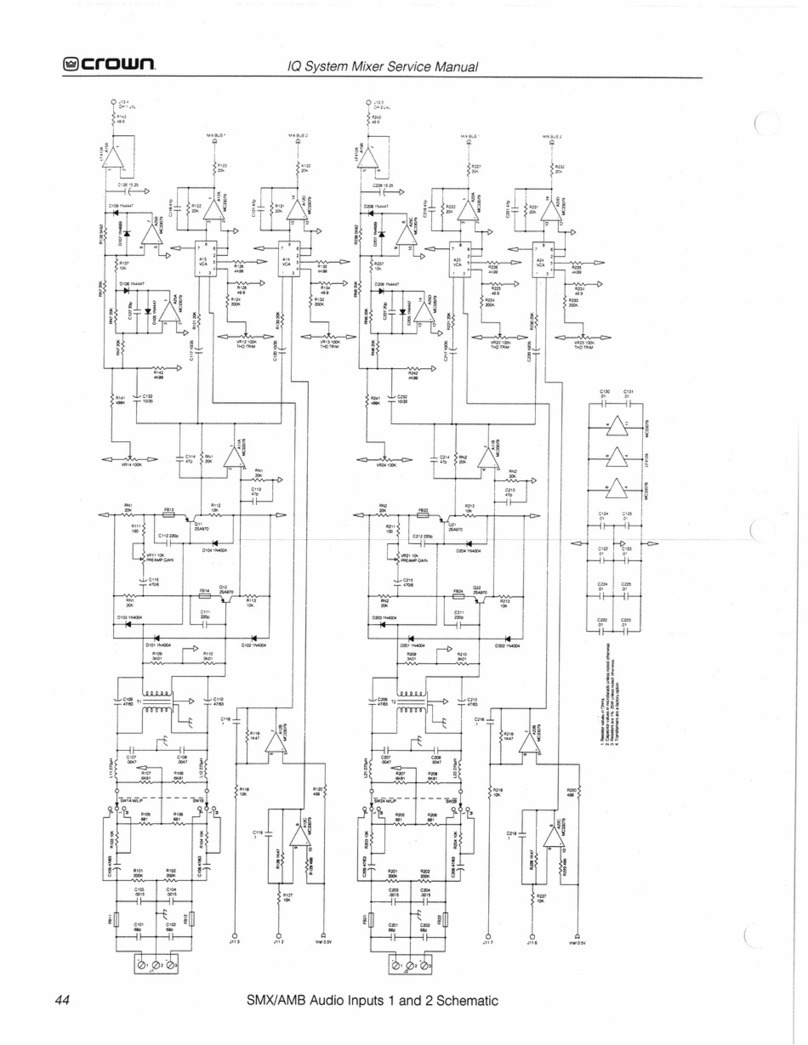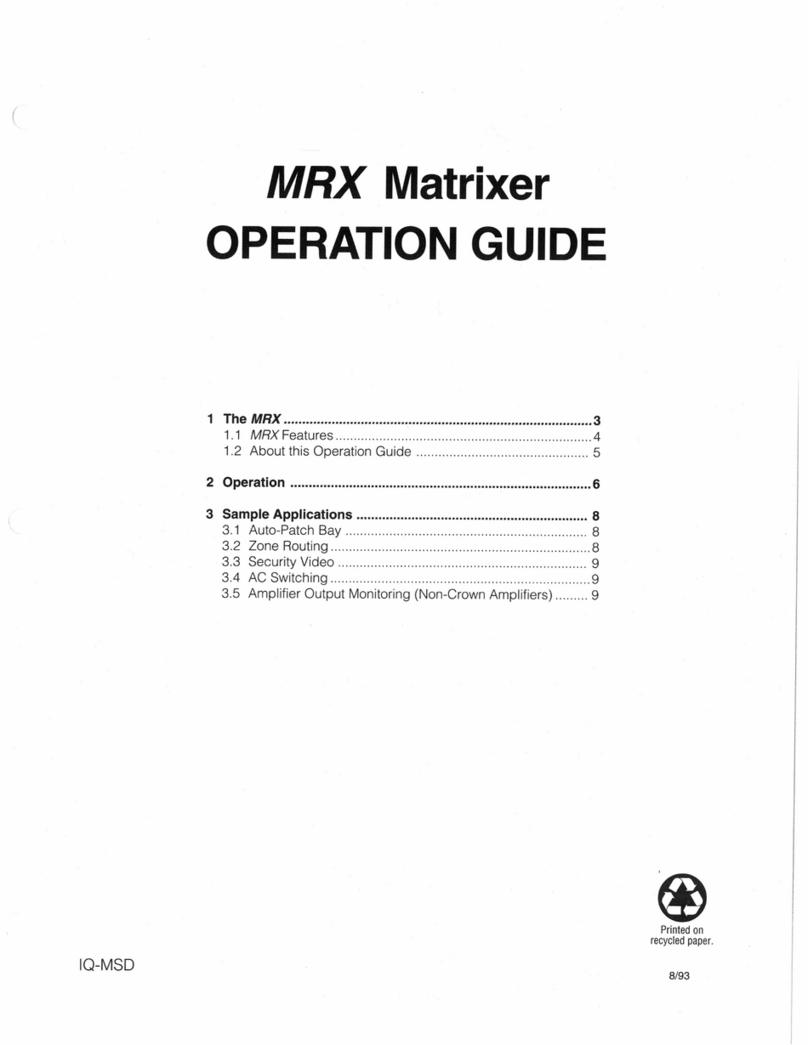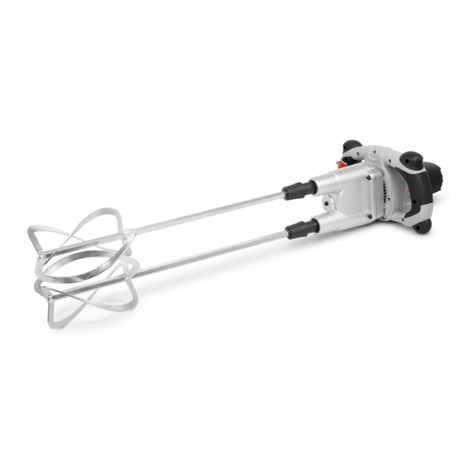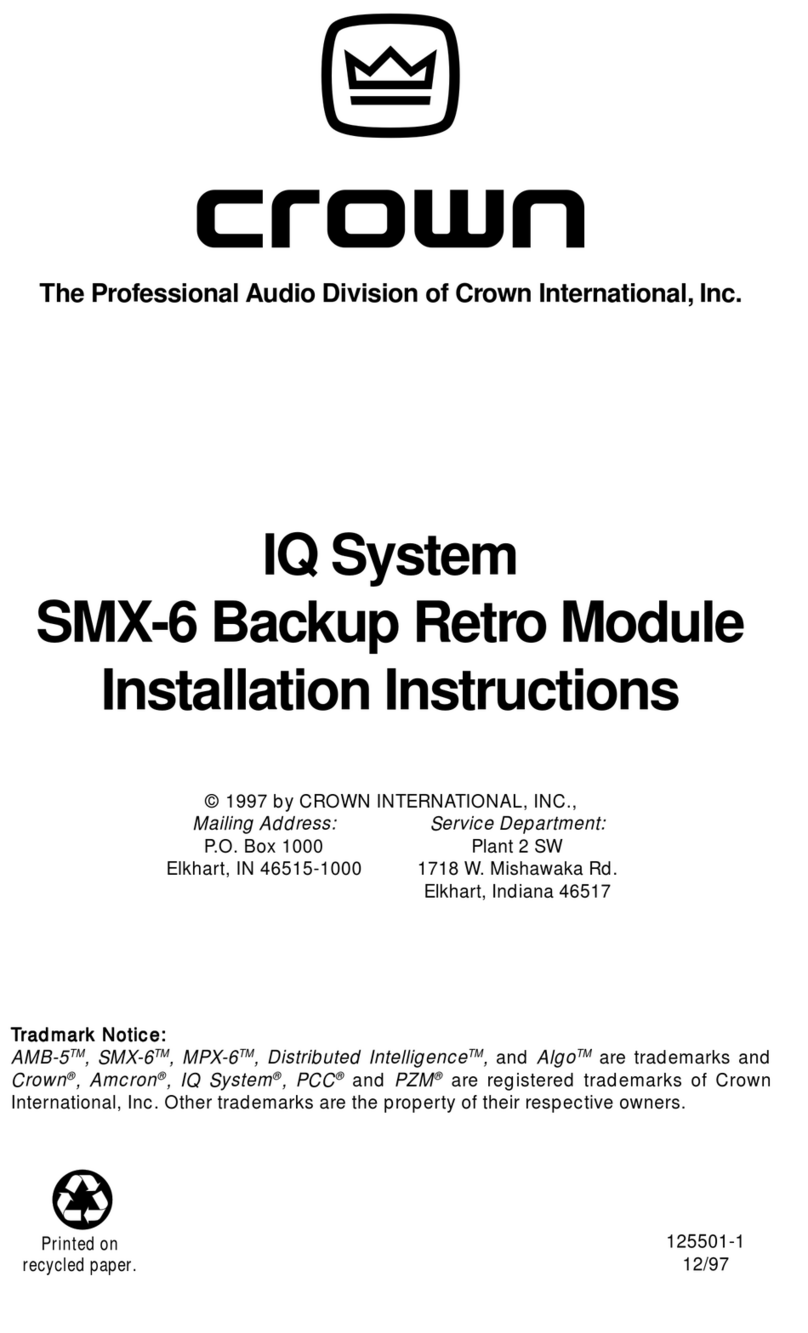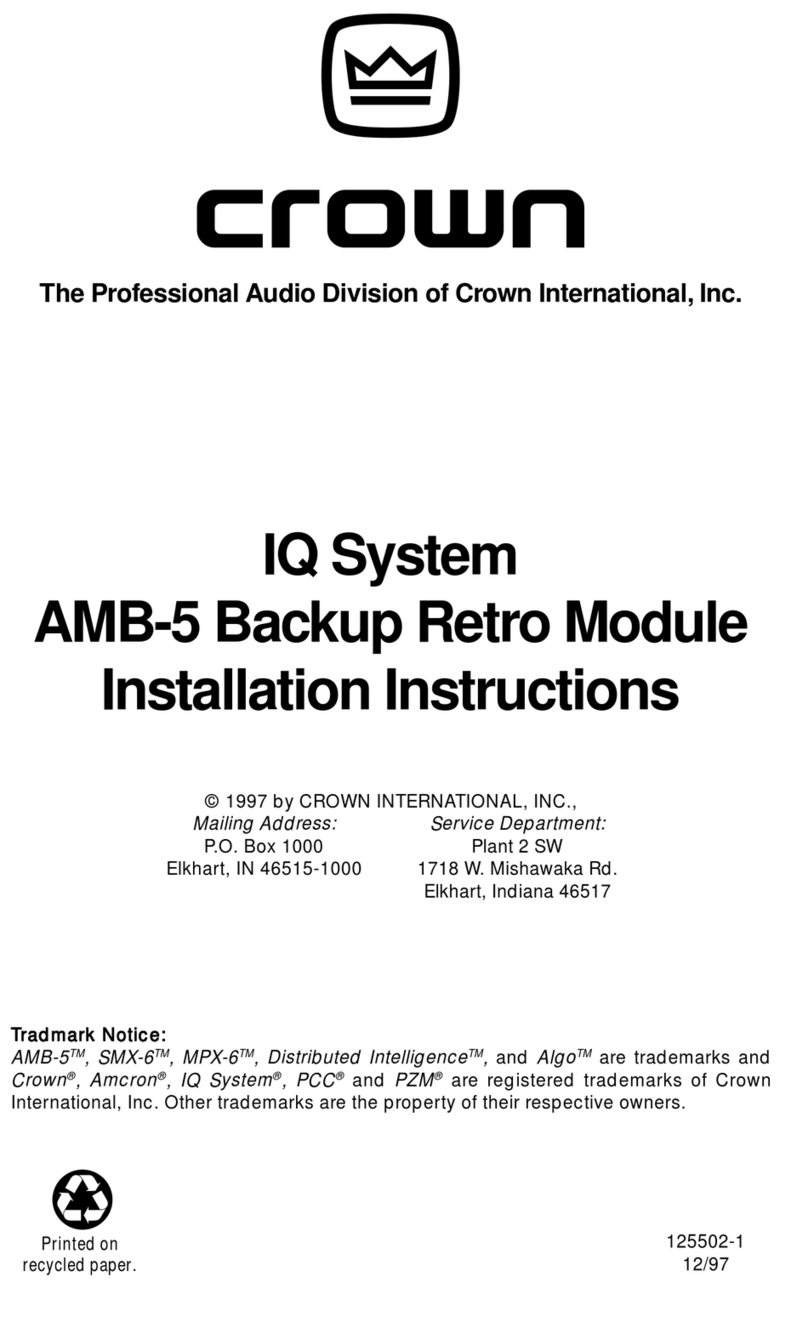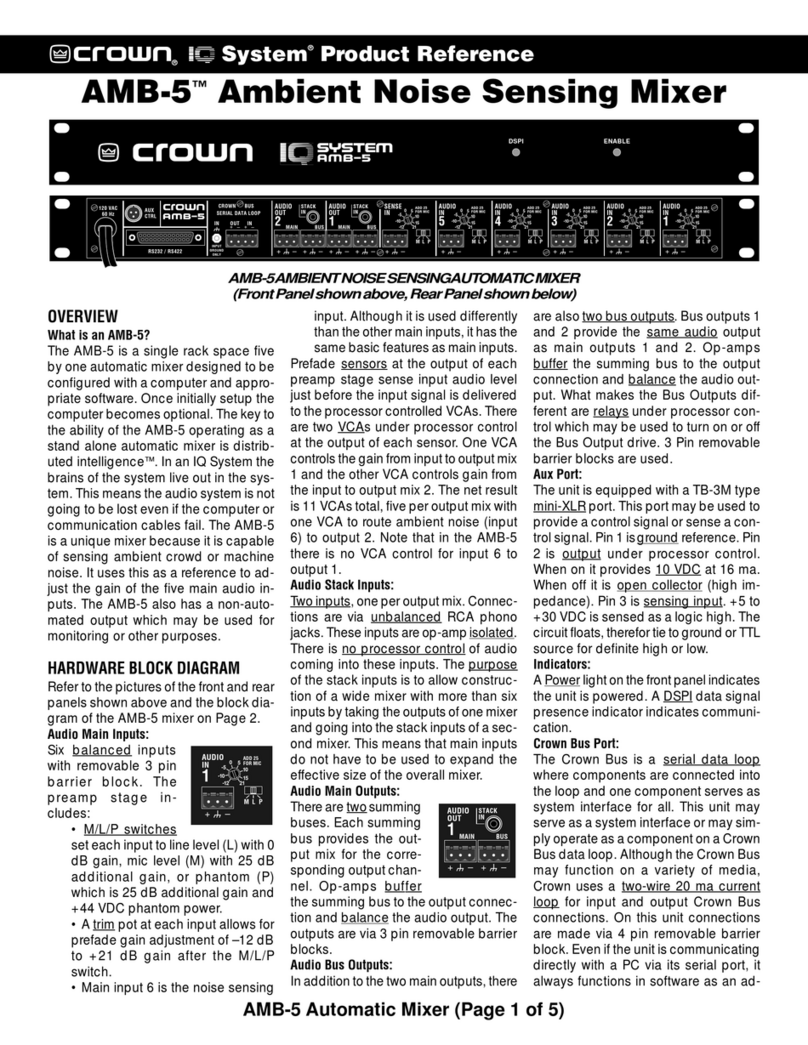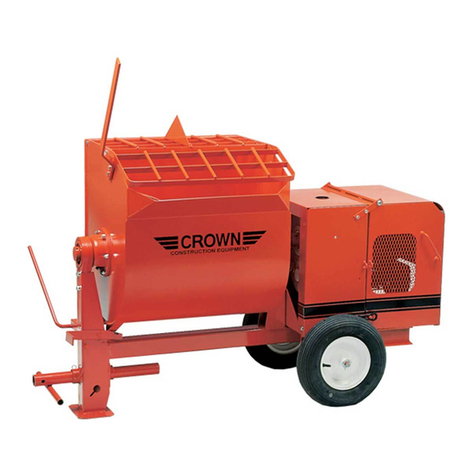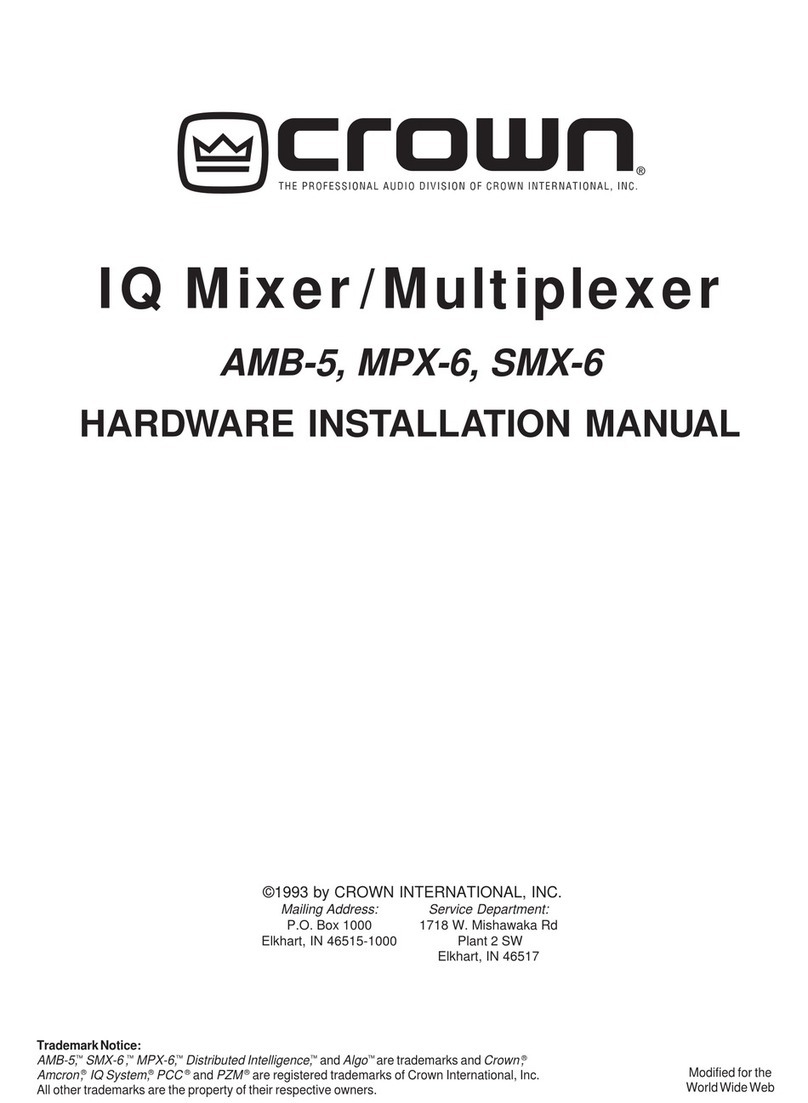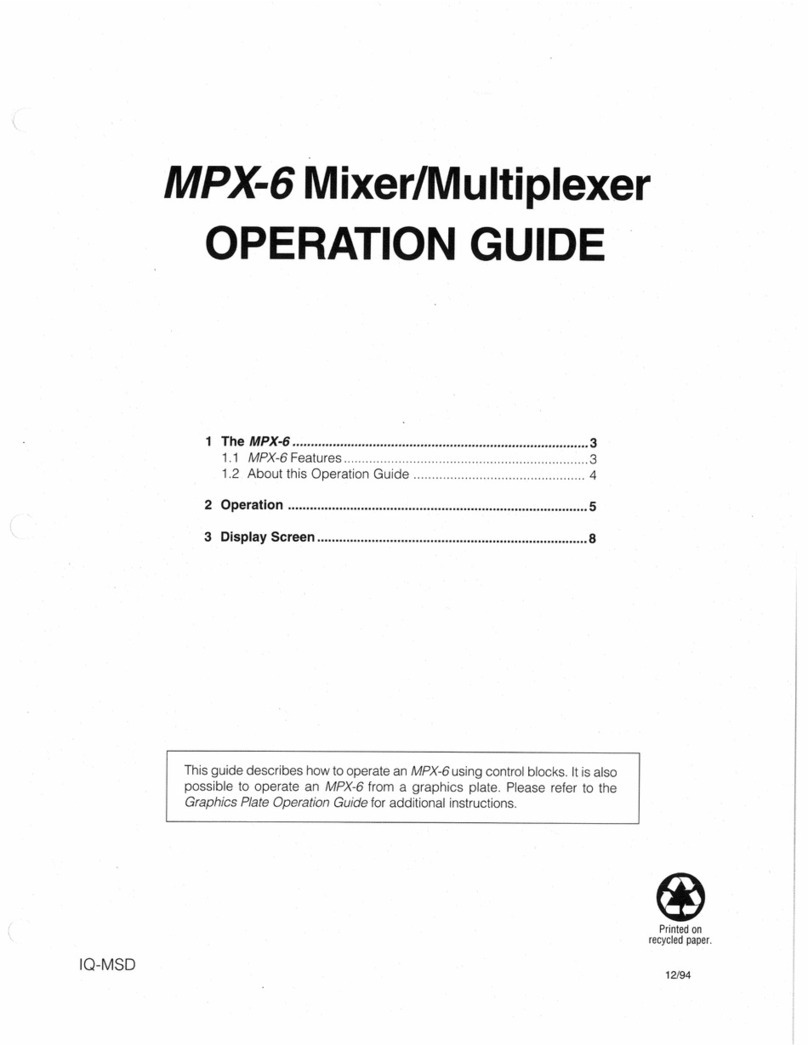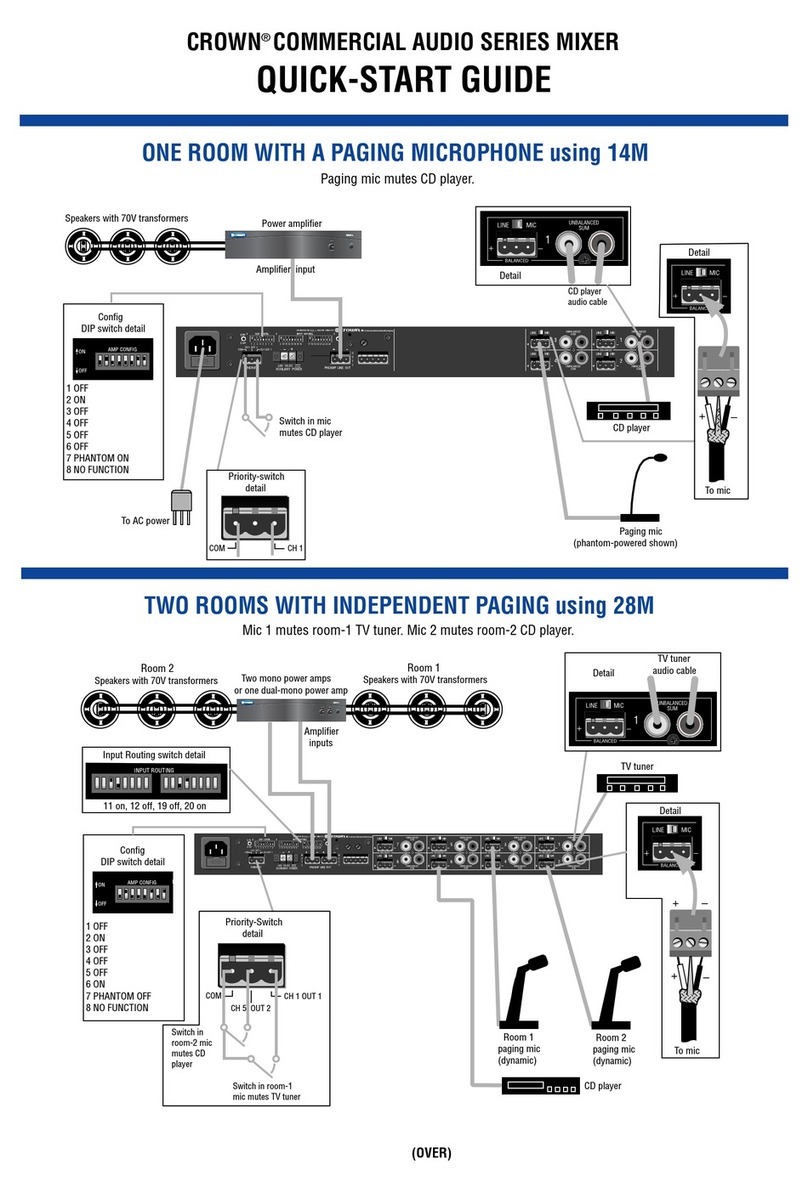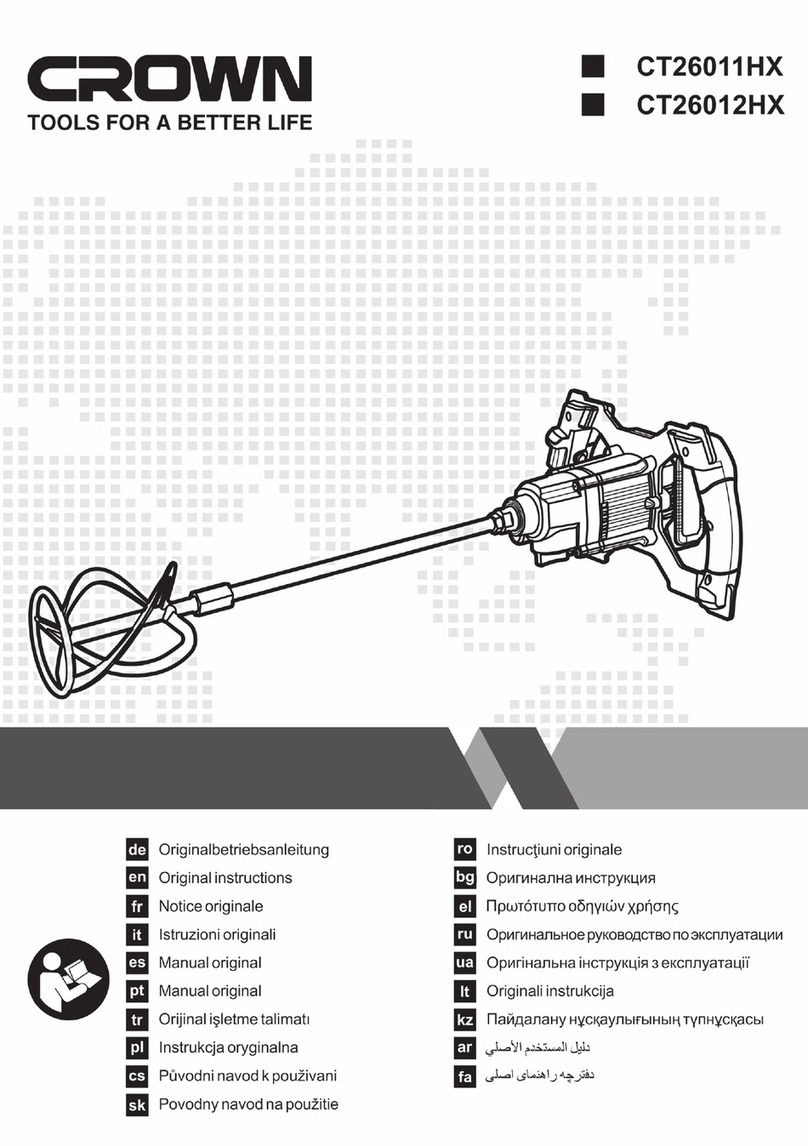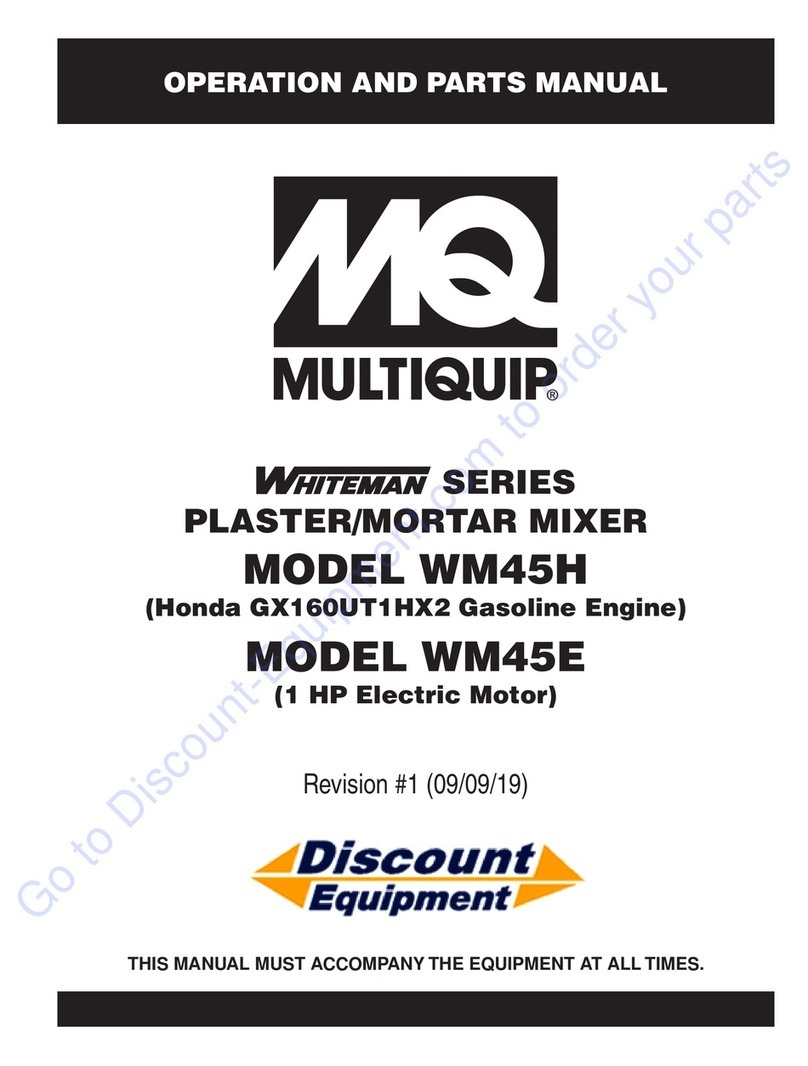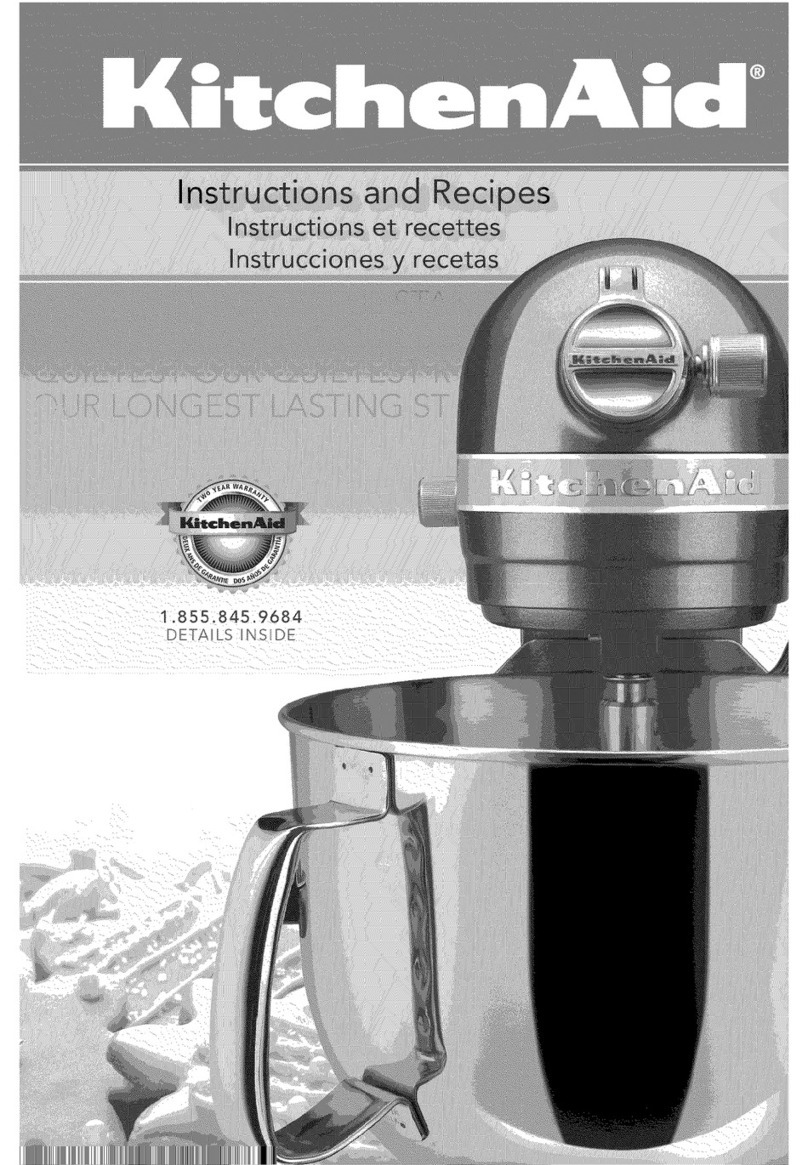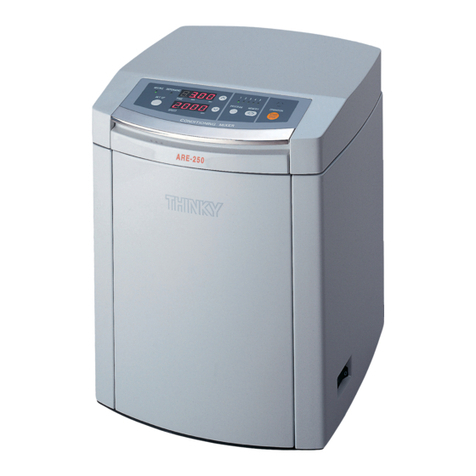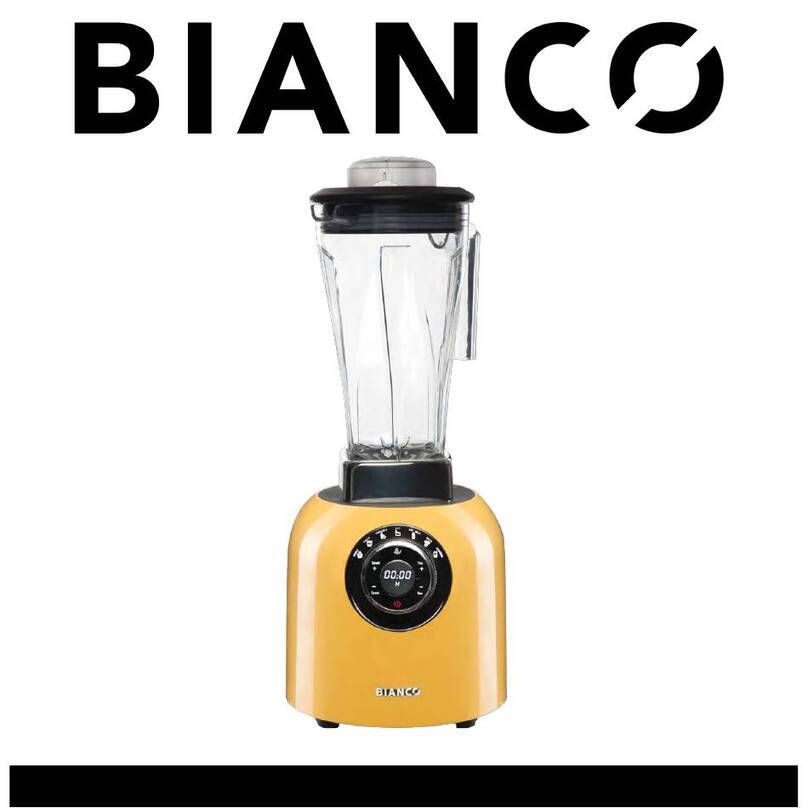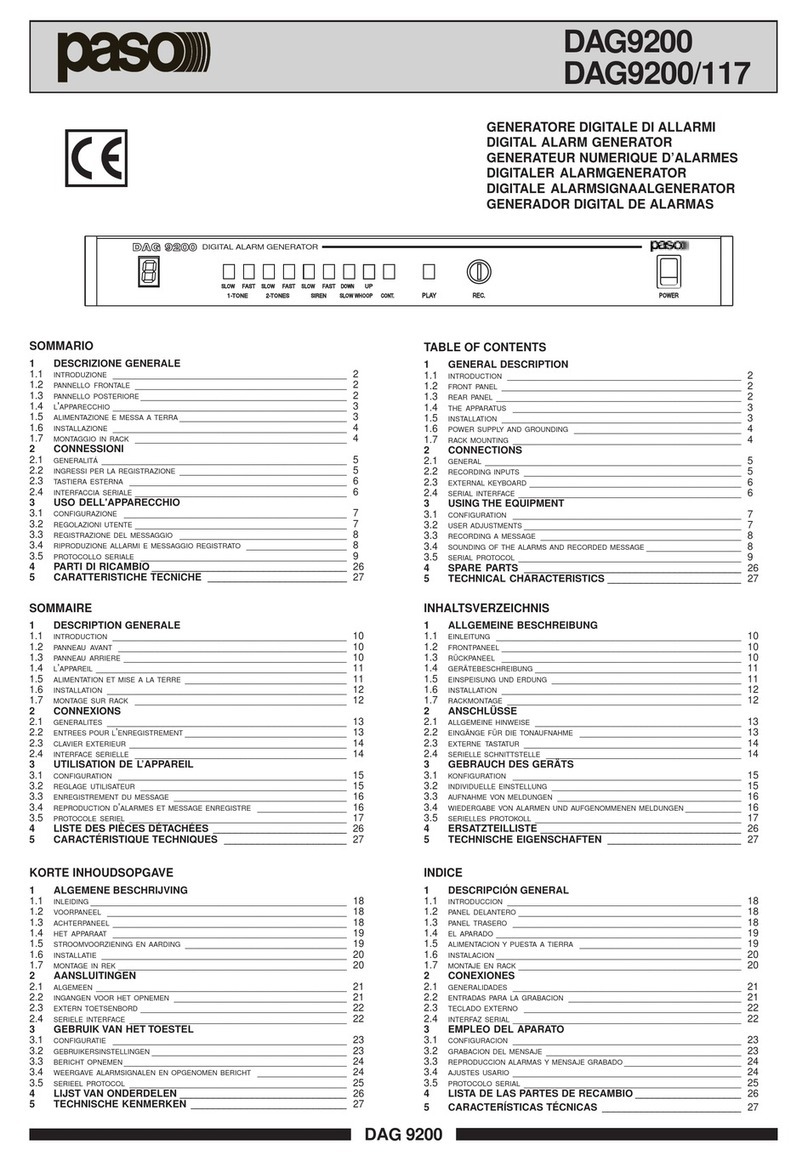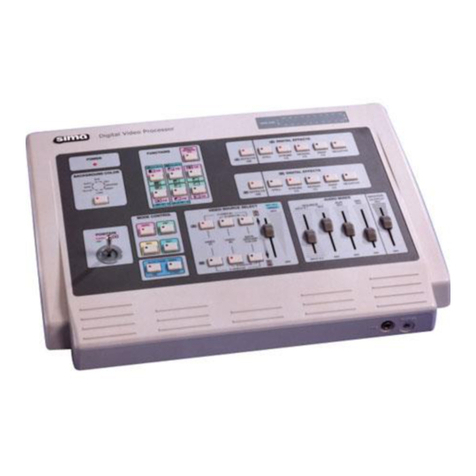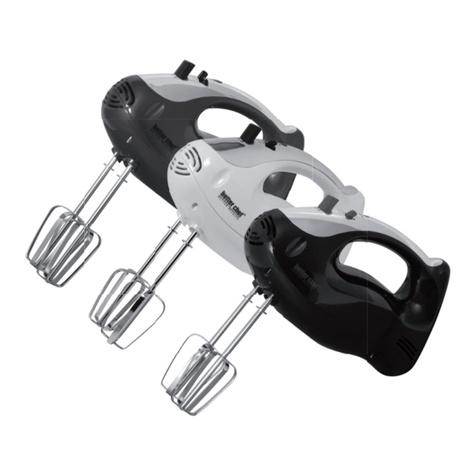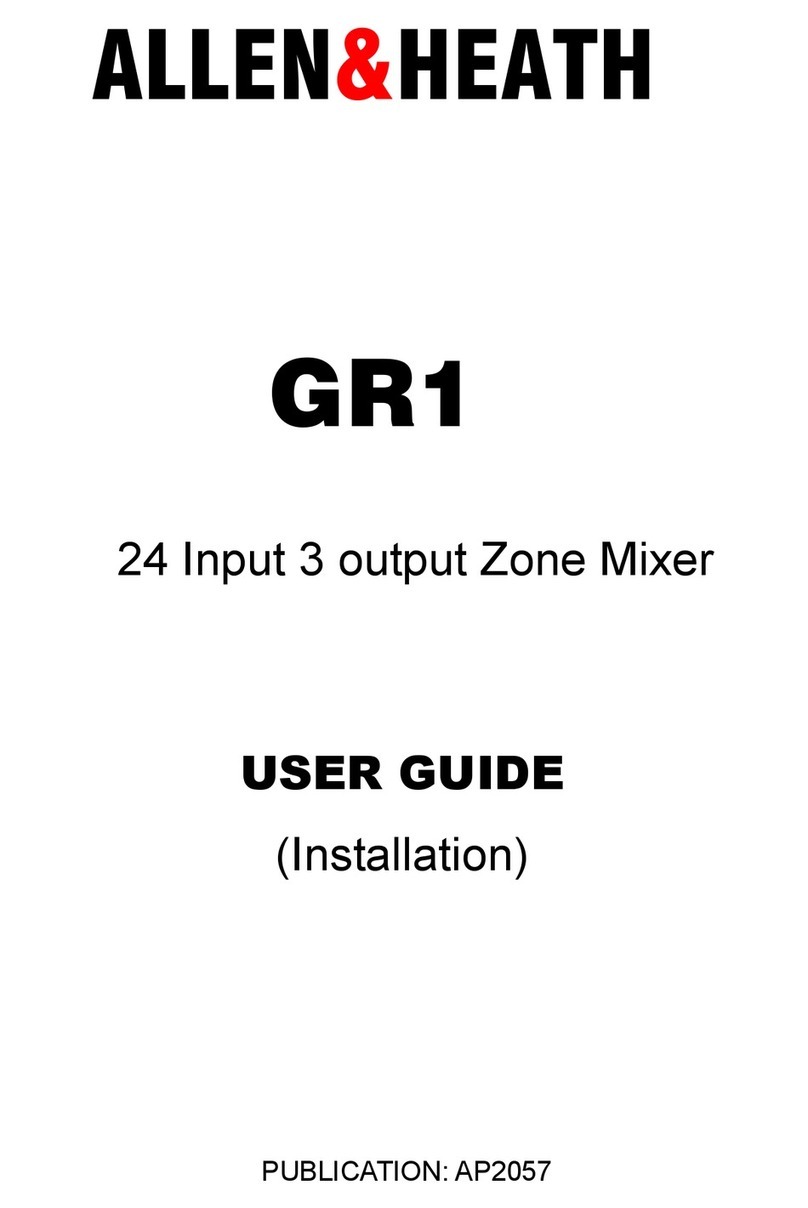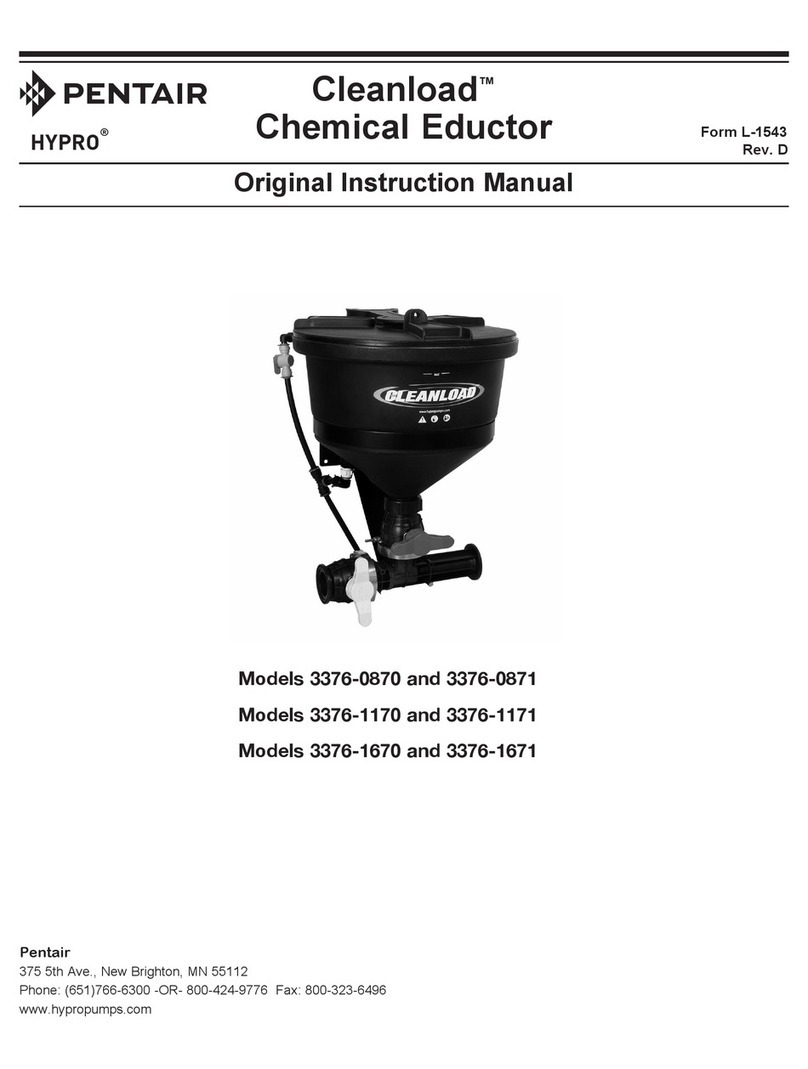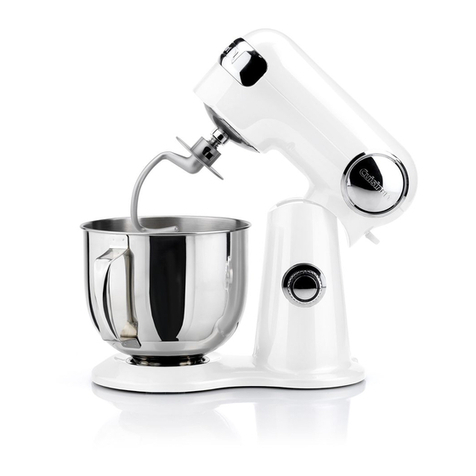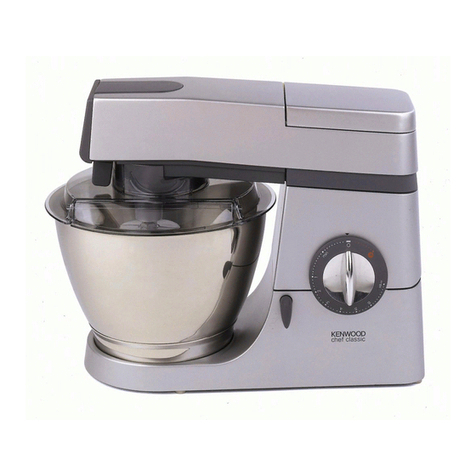2
CROWN´S CONDITIONS OF SALES & LIMITED WARRANTY
All sales made by Crown Construction Equipment Division of
ELJO Industries Inc. are subject to these conditions unless
otherwise agreed in writing with a duly authorized officer of
Crown. In all cases of conflict between these conditions and the
requirements of the purchase order, these conditions shall
prevail.
(1) SALES POLICY: Nothing herein shall be construed as abridging
the right of Crown to sell directly or indirectly to: (a) Federal,
State or Provincial Governments or Agencies thereof, or to
Agencies employing Federal, State or Provincial Government aid;
(b) Purchasers who buy Crown´s products for sale as integral or
assembled parts of their products; (c) Firms operating on a
national scale; (d) Any other class of purchaser to whom Crown
may from time to time, elect to sell.
(2) PRICES: All prices are F.O.B. our warehouses, freight
allowance as specified on Distributor Net Price Lists. The
suggested list prices and discounts schedules are established by
Crown and are intended to act as a guide for our distributors.
Unless otherwise stated in writing, prices are subject to change
without notice and will be applied as in effect at time of
shipment.
(3) TERMS: Unless otherwise agreed upon in writing by an officer
of Crown, all invoices become due and payable net 30 days
following the date in invoice. Interest at the maximum legal rate
will be charged on all overdue accounts. Minimum net charge
per invoice is $75.00
(4) CANCELLATION AND CHANGES: No orders or sales may be
cancelled or changed without the consent of Crown. At Crown´s
option cancelled / changed orders are subject to payment of
cancellation charges equal to all costs incurred by Crown up to
the date of cancelation / change.
(5) DELAYED DELIVER: Crown shall not be liable for any delay of
merchandise for any cause whatsoever.
(6) CLAIMS: All goods shall be deemed delivered to purchaser at
the time they are placed in the hands of carrier and consigned to
purchaser: loss, damage or destruction of any said merchandise
is assumed by purchaser. No claims may be made for shortages
unless made in writing within ten days from receipt of
merchandise.
(7) RETURN OF GOODS: Written permission from Crown must be
obtained before returning any merchandise. All transportation
charges must be borne by the purchaser. Credit for returned
goods will be based on the original price paid, less 20%. Special
parts or custom-built items cannot be returned for credit.
(8) LIMITATION OF LIABILITY: Crown´s liability on any claim of any
kind, including negligence, for any loss or damage arising out of,
connected with, or resulting from contract, or the performance
or breach thereof, or the design, manufacture, sale, delivery,
resale, installation, technical direction of installation, inspection,
repair, operation or use of any equipment covered by or
furnished under contract shall in no case exceed the price paid
by the purchaser for de equipment. Crown also disclaims all
liability, whether in contract, tort, warranty, or otherwise, to any
party other than purchaser.
(9) All Price Lists, Catalogues and other material shall remain the
property of Crown and are subject to return on demand. The
Suggested List Prices are established by Crown and are intended
to act as a guide. All shipping weights shown are approximate.
LIMITED CROWN WARRANTY
For one year from date of purchase, Crown will replace or repair
for the original purchaser, free of charge, any part or parts, found
upon examination by any Crown Authorized Service Depot or by
the crown factory, to be defective in material or workmanship or
both. Crown extends the warrantee for the drum bearings and
seals on plaster/mortar mixers to “Life-time” and agrees to
furnish, free of charge, the seals and bearings only upon receipt
of the defective parts and evaluation at the factory. Equipment
and accessories not manufactured by Crown warranted only to
the extent of the original manufacturer´s warranty. All
transportations charges on parts submitted for replacement or
repair under this warranty must be borne by the purchaser. For
warranty service contact your nearest Crown Authorized Service
Depot.
THERE IS NO OTHER EXPRESS WARRANTY, IMPLIED
WARRANTIES, INCLUDING THOSE OF MERCHANTABILITY AND
FITNESS FOR A PARTICULAR PURPOSE ARE LIMITED TO ONE YEAR
FROM PURCHASE AND TO THE EXTENT PERMITTED BY LAW.
LIABILITY FOR CONSEQUENTIAL DAMAGES UNDER ANY AND ALL
WARRANTIES ARE EXCLUDED TO THE EXTENT EXCLUSION IS
PERMITTED BY LAW. (THIS WARRANTY IS AN ADDITION TO ANY
STATUTORY WARRANTY.)
